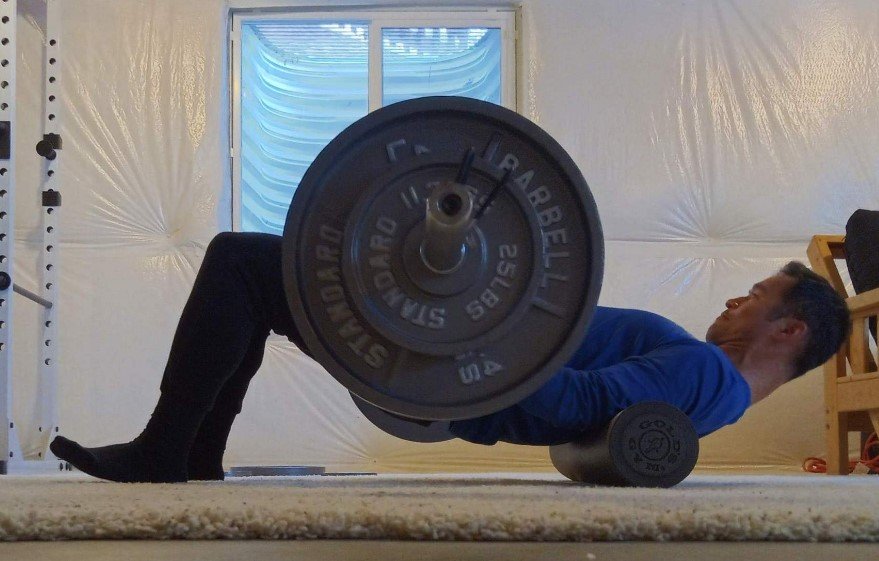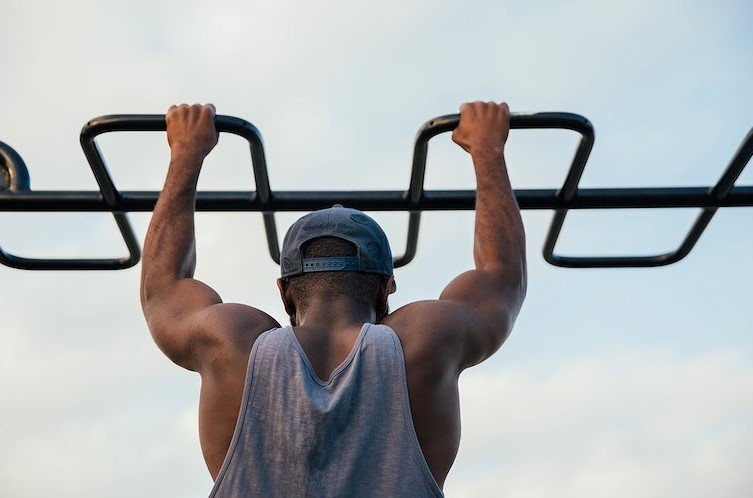As you turn to check out your backside, you notice something that catches your attention – a lack of definition in the Workouts for Lower Buttocks. This could be due to underdeveloped gluteal muscles, specifically the gluteus minimus and glute maximus. Don’t fret! You’re not alone in this struggle to sculpt those glutes, including the gluteus minimus and gluteus maximus, and create that coveted butt crease with exercises like the glute bridge.
No need to embark on an exhaustive search or spend hours scrolling through fitness forums – we’ve got you covered with simple yet powerful exercises for glute activation and building muscle. These exercises will help you shape and tone your glutes, including step-ups.
Warm-Up Routines: Workouts for Lower Buttocks
A good warm-up is essential before diving into any intense glute exercises, especially when targeting the glutes and gluteus maximus. Training your hamstrings, hips, and legs helps prevent injuries and prepares your body for the exercises ahead. By increasing blood flow to the muscles and raising your core temperature, a proper warm-up primes your body for optimal exercise performance and training. It helps with the activation of the hamstrings.
Dynamic Stretches
Dynamic stretches are an excellent way to warm up your hamstrings, hips, and legs before engaging in intense exercise. These movement stretches involve exercising the hamstrings and hips, helping to improve flexibility and mobility. Some effective dynamic stretches for the glutes and hamstrings include leg swings, walking lunges, and hip circles.
Activation Exercises
Activation exercises specifically target the gluteus muscles, which are crucial for sculpting your lower buttocks. These exercises also engage the hamstrings and hips. These exercises ensure proper activation and engagement of the gluteus and hamstrings, ensuring they’re firing properly during your workout and promoting strong hips.
Cardiovascular Exercise
Cardiovascular exercise not only gets your heart pumping but also warms up all major muscle groups in your lower body, including the hamstrings, glutes, and hip. This type of exercise is especially beneficial for activating the gluteus muscles. Activities such as jogging on the spot or doing jumping jacks can be great options to include in your warm-up routine for exercise.
Mobility Drills
Mobility drills are exercises that target specific areas of the body to improve joint movement and range of motion. These drills can help strengthen and stretch muscles, including the hamstrings. For targeting the glutes and hamstrings, exercises like marching or high knees can be beneficial for the hip muscles.
Resistance Bands
Incorporating resistance bands into your warm-up routine can add an extra challenge to your lower body exercises, specifically targeting the glutes and hip muscles. By placing a resistance band just above your knees, you create additional tension that activates the gluteus muscle and forces them to work harder during exercise.

Beginner Movements for Lower Buttock Growth
Before diving into the exercise movements, it’s important to establish the correct starting position for your hip and gluteus muscles. Stand tall with your feet hip-width apart, shoulders relaxed, and engage your core while focusing on your glutes during this exercise position. This will ensure proper alignment and stability throughout the glutes and hip exercises.
Basic Step
The basic step is a simple yet effective exercise movement that targets your glutes and hips, specifically focusing on your lower buttocks.
- Start by taking a step forward with one foot to engage your hip and glutes, while bending your front knee slightly.
- Push off from your front foot using your hip muscles and bring your back foot forward to meet it, engaging your glutes in the exercise.
- Repeat this exercise movement on both sides to engage both hip glutes equally.
Movement 1: Squats for Lower Buttock Activation
Squats are a classic exercise that works wonders for the lower body, including the glutes and hip muscles.
- Begin by standing with your feet shoulder-width apart.
- Lower yourself down as if you’re sitting back into an imaginary chair, engaging your hip and glutes, while keeping your weight in your heels and chest lifted.
- Engage your hip and glute muscles as you perform this exercise, pushing through your heels to return to a standing position.
Movement 2: Lunges for Targeted Butt Work
Lunges are another fantastic exercise for targeting the glutes and hip muscles.
- Start by stepping forward with one foot and lowering yourself down until both knees and hip are at 90-degree angles, engaging your glutes.
- Make sure your front knee stays directly above your hip and avoid letting it extend past your glute.
- Push through your front hip and glute as you stand back up and repeat on the other side.
Movement 3: Glute Bridges for Booty Activation
Glute bridges are an excellent exercise for isolating and activating the muscles in your lower buttocks, including the hip muscles.
- Begin by lying flat on your back with your knees bent and feet hip-width apart, engaging your glute muscles.
- Push through your heels as you lift your hips off the ground, squeezing your glutes at the top.
- Lower yourself back down and repeat for a good burn in those lower glute and hip muscles.
Front Knee: Keep an Eye on Proper Alignment
Throughout these glute movements, it’s crucial to pay attention to the alignment of your front knee. Make sure it stays directly above your ankle and doesn’t extend past your toes. This will help prevent unnecessary strain on the knee joint and ensure that you’re effectively targeting those lower buttock muscles.
By incorporating these beginner movements into your workout routine, you’ll be well on your way to building strong and shapely lower buttocks. Remember to focus on proper form, engage those glute muscles, and gradually increase the intensity as you become more comfortable with each exercise.
Step-Ups: The Stairway to Firmer Lower Buttocks
Step-ups are a fantastic exercise that specifically targets the lower buttocks, also known as the upper glutes. This simple yet effective movement involves stepping up onto an elevated surface, such as a step or a sturdy platform, using one leg at a time.
How to Perform Step-Ups Correctly
To perform step-ups correctly, follow these steps:
-
Stand in front of a step or platform with your feet hip-width apart.
-
Place one foot firmly on the step, ensuring that your entire foot is supported.
-
Engage your core and maintain an upright posture throughout the exercise.
-
Push through your front heel and lift your body upward until your front leg is straight.
-
Slowly lower yourself back down, allowing your back foot to lightly touch the ground before repeating the movement with the opposite leg.

Stretching and Recovery
Stretching
Stretching is a crucial component. By incorporating stretching exercises into your workout routine, you can effectively target the muscles in this area and enhance their flexibility. One important muscle group to focus on is the tensor fasciae latae (TFL). This muscle runs along the outer side of your hip and plays a significant role in stabilizing the pelvis.
- To stretch the TFL, you can perform a simple exercise called the standing TFL stretch.
- Stand upright with your feet shoulder-width apart. Take one step forward with your right foot and bend your right knee slightly.
- Cross your left leg behind your right leg, keeping both feet flat on the ground.
- Lean towards the left side until you feel a gentle stretch in your outer hip area.
- Hold this position for 20-30 seconds and then switch sides.
Physical Therapy
In addition to stretching, physical therapy can be highly beneficial for maintaining healthy lower buttocks. Physical therapists are trained professionals who specialize in treating musculoskeletal conditions and injuries. They can provide targeted exercises and techniques to strengthen and rehabilitate the muscles in your lower buttocks.
If you’re experiencing any discomfort or pain in this area, seeking guidance from a physical therapist can help identify any imbalances or weaknesses that may be contributing to the issue. They will create a personalized treatment plan tailored to address your specific needs, helping you regain strength and function in your lower buttocks.
Proper Alignment
Maintaining proper alignment during workouts is essential for targeting the lower buttock muscles effectively. When performing exercises such as squats or lunges, it’s important to pay attention to your form and ensure that you’re engaging the correct muscles.
To maintain proper alignment during squats, stand with your feet hip-width apart and toes pointing forward. Keep your chest lifted, and shoulders back, and engage your core muscles. As you lower into the squat position, focus on pushing your hips back and down while keeping your knees in line with your toes. This will help activate the gluteal muscles, including the lower buttocks.
Tracking Your Progress: Setting Goals and Celebrating Lower Buttock Gains
Progress: Measure Your Success
Tracking your progress is an important part of any fitness journey. It helps you stay motivated and allows you to see how far you’ve come.Keeping track of your progress is crucial in achieving muscle growth and strength gains. To effectively track your progress, set specific goals that are measurable and realistic.
Muscle Growth: Building Those Booty Muscles
To achieve noticeable gains in your lower buttocks, focus on exercises that target the glute muscles. Squats, lunges, hip thrusts, and glute bridges are all effective exercises that can help build muscle in this area.
When performing these exercises, make sure to use proper form and engage the targeted muscles. This will ensure that you’re maximizing the effectiveness of each movement and promoting muscle growth in your lower buttocks.
Sets: Finding the Right Balance
The number of sets you perform during your workouts can play a significant role in building strength and muscle in your lower buttocks. However, finding the right balance is key.
Start with a moderate number of sets per exercise (around 3-4) and gradually increase as you become stronger. Over time, adding more sets can help stimulate further muscle growth in this area.
Conclusion
And there you have it, folks! We’ve covered a range of exercises and tips to help you tone and strengthen those lower buttocks. From warming up properly to tracking your progress, each section has provided valuable insights into achieving your fitness goals. Now, armed with this knowledge, it’s time to put it into action.
So, what are you waiting for? Get off that couch, lace up your sneakers, and start incorporating these exercises into your workout routine. Remember, consistency is key. Stick with it, stay motivated, and watch as those lower buttocks transform before your eyes. You’ve got this!




































